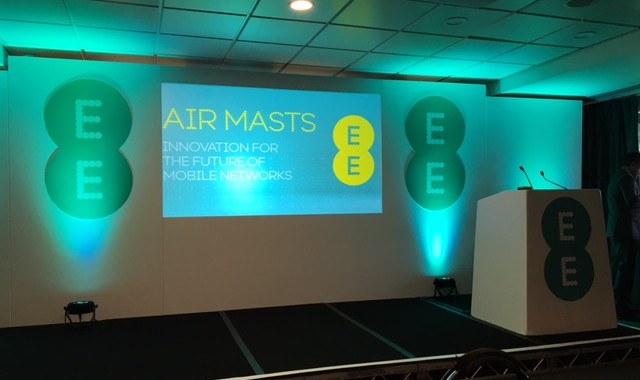EE Shows Off Drones And Balloons To Boost Rural 4G Coverage

EE’s new drones and balloons will boost coverage in remote areas and during natural disasters
EE has unveiled two portable technologies designed to improve its network reach across the UK, with a focus on remote, hard to reach areas.
At an exclusive press event at the Kia Oval cricket ground in London, EE showed off its patent-pending balloon and drone ‘air masts’ which will be used to provide connectivity in rural areas and in the wake of natural disasters such as storms or floods.
The network provider will also be deploying a 32-strong fleet of Rapid Response Vehicles to support the new Emergency Services Network (ESN).
![]()
Flying high
“When we look at our network, rural areas are where most of the work and focus is now needed, but it’s also where it’s the hardest,” said EE CEO Marc Allera. “Connecting rural Britain is one of the hardest things we have to do.
“Getting planning permission for new and upgrading sites is harder. Putting back-haul to carry the traffic back to our network is harder. Ensuring a stable, reliable power source is harder and getting engineers to carry out maintenance in these vast numbers of locations in difficult to reach areas is harder.”
This is where the ‘Helikite’ balloons and drones come in, enabling the provision of 4G mobile coverage in areas where permanent sites have been damaged or where service is currently limited.
The balloons can be deployed in less than an hour and are able to stay in place for up to a month to provide wide area network access, while the drones come equipped with a basestation and antenna to provide targeted coverage in search and rescue scenarios.
Both technologies are currently in patent-pending status and EE is working with Ofcom to address any potential regulatory concerns.
“Our obsession continues to be on coverage,” Allera added. “We’re here today to focus on what happens when we lose one of our sites to power failure, a break in fibre, a loss of line of site or a major flood.
“It isn’t going to be enough to just build the coverage. We’re thinking differently because we have to.”
The Rapid Response Vehicles were part of EE’s vision for the ESN which helped it win the £1 billion contract in December 2015. The new network will replace the existing and “obsolete” TETRA system and is expected to save the taxpayer £1 million a day by latching onto EE’s LTE network.
The vehicles feature an 11.5 metre mast with a deployment time of less than 30 minutes, enabling the service to stay live during local site outages or maintenance work.
Quiz: The past, present and future of 4G networks